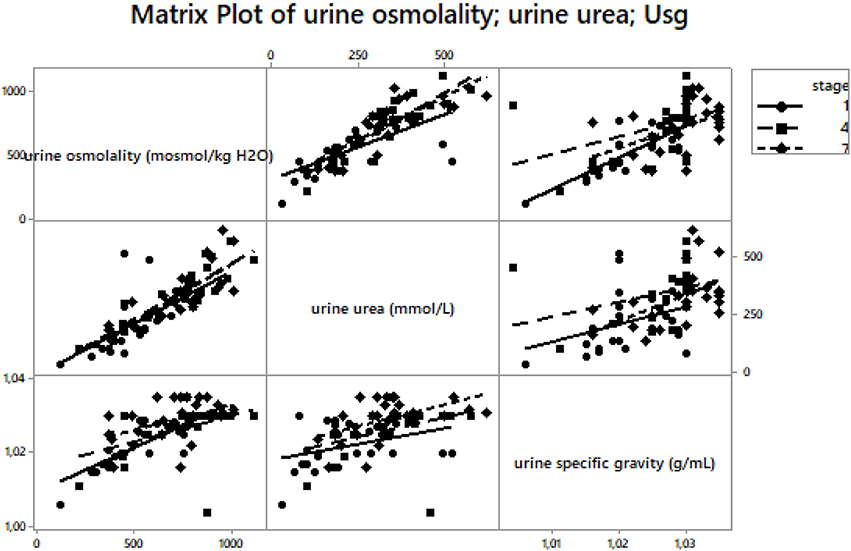

Describe the general procedure for using a “dipstick” to assess a urine sample. What might turbid urine suggest? Please watch this second video about Urinalysis, focusing on the use of a commercially available “dipstick” for chemical analysis of a urine sample, and answer the questions below (Video approximately 16 minutes in duration) 6. What is meant by the turbidity of urine? 5. What medical condition might orange urine suggest? What might be the cause of this? 4. Normal animals may have a urine SG of any value depending on the physiological circumstances.


Decreased urine osmolality and specific gravity. Urine with an SG of >1.012 has been concentrated to some degree-however whether the degree of concentration is appropriate must now be determined for the patient. Learn vocabulary, terms, and more with flashcards, games, and other study tools. Beets aside, what might red urine suggest? b. Urine with an SG of 1.008-1.012 has neither been diluted or concentrated. Apart from hydration status, what other factors may influence urine color? a. If you avoid drinking fluids, levels higher than 1.030. If you drink a lot of water, 1.001 may be normal. What are the 3 categories of information that can be obtained from a UA? a. Your urine specific gravity is generally considered normal in the ranges of 1.005 to 1.030. What is a urinalysis (UA), and what can it evaluate? 2. Duplication for commercial use must be authorized in writing by ADAM Health Solutions.Name: _ Community College of Philadelphia Biology 110: Anatomy and Physiology II Urinary Physiology (Unit 30) Please watch this video about Urinalysis, focusing on gross examination of the sample, and answer the questions below (Video approximately 6 minutes in duration). If serum and urine osmolality are not in keeping with each other this may indicate a problem with water balance which may manifest in. Urine osmolality is largely due to the presence of urea and creatinine. Links to other sites are provided for information only - they do not constitute endorsements of those other sites. Urine osmolality is a measure of the kidney’s ability to concentrate urine the more concentrated the urine is, the higher its osmolality. A licensed physician should be consulted for diagnosis and treatment of any and all medical conditions. The information provided herein should not be used during any medical emergency or for the diagnosis or treatment of any medical condition. This site complies with the HONcode standard for trustworthy health information: verify here. Learn more about A.D.A.M.'s editorial policy editorial process and privacy policy. Although urinalysis demonstrated significant. The relationship between urine osmolality and specific gravity. A 46-year-old woman with poorly controlled type 2 diabetes complained of polyuria with a daily output of 5 L. The measurement of osmolality is a superior method for determining the urine solute. Specific gravity determinations are less precise at measuring urine osmolality at lower levels (1.01 g/ml or less). Replacing creatinine measurements with specific gravity values to adjust urine cotinine concentrations. Urine osmolality was significantly (P <.05) lower in samples from horses treated with furosemide when compared with untreated horses. is among the first to achieve this important distinction for online health information and services. Haddow JE, Knight GJ, Palomaki GE, Neveux LM, Chilmonczyk BA. follows rigorous standards of quality and accountability. is accredited by URAC, for Health Content Provider (URAC's accreditation program is an independent audit to verify that A.D.A.M.


 0 kommentar(er)
0 kommentar(er)
